Table of Contents
Electric Vehicles (EVs): Steering the Future of Green Transportation
In the ongoing evolution of transportation, few innovations have promised as transformative an impact as Electric Vehicles (EVs). These aren’t just the next iteration of cars but represent a leap forward, an emblem of our collective push towards a greener future. As we stand at the cusp of a new era, the significance of Electric Vehicles (EVs) in reshaping our understanding of transportation becomes ever clearer.
The world’s emphasis on sustainability isn’t just a fleeting trend but a deeply ingrained shift in our global consciousness. With climate change, depleting natural resources, and increasing urban pollution weighing heavily on our minds, the need for solutions is urgent. Enter Electric Vehicles (EVs), perfectly timed to cater to our collective yearning for cleaner, greener alternatives. Their design and mechanism, devoid of the harmful emissions that traditional combustion engines spew, position them as the paragons of green transportation.

Every transition has its pioneers, and in the quest for sustainable transport, Electric Vehicles (EVs) are unmistakably leading the charge. Their presence on our roads isn’t just a testament to technological advancement but echoes a global sentiment — a yearning for cleaner cities, quieter streets, and a reduced carbon footprint. Their surge in popularity is more than just about aesthetics or novelty; it’s a reflection of their alignment with the broader global movement towards environmental responsibility.
In essence, as the world gravitates towards sustainable solutions, Electric Vehicles (EVs) have emerged not just as an alternative, but as a beacon of hope. They’re not merely vehicles; they’re symbols of a brighter, cleaner future. A future where transportation doesn’t come at the cost of the environment, but rather, works in harmony with it.
An Introduction to Electric Vehicles
What Defines Electric Vehicles?
The term “Electric Vehicles” or “EVs” as they are commonly abbreviated, has become a buzzword in modern transportation dialogues. But what precisely distinguishes them from the vehicles we’ve been accustomed to for over a century?
At their core, Electric Vehicles (EVs) embody a fundamental shift in vehicular design and function. Unlike traditional vehicles, which rely on internal combustion engines fueled by gasoline or diesel, EVs harness the power of electricity. This electricity is stored in batteries, which are then used to power electric motors, propelling the vehicle forward.
These electric motors are the heart and soul of EVs. Efficient, quiet, and free from tailpipe emissions, they represent a stark departure from the noisy and polluting internal combustion engines of yesteryears. The absence of a traditional gasoline engine means no exhaust fumes, making EVs a cleaner option for our environment.
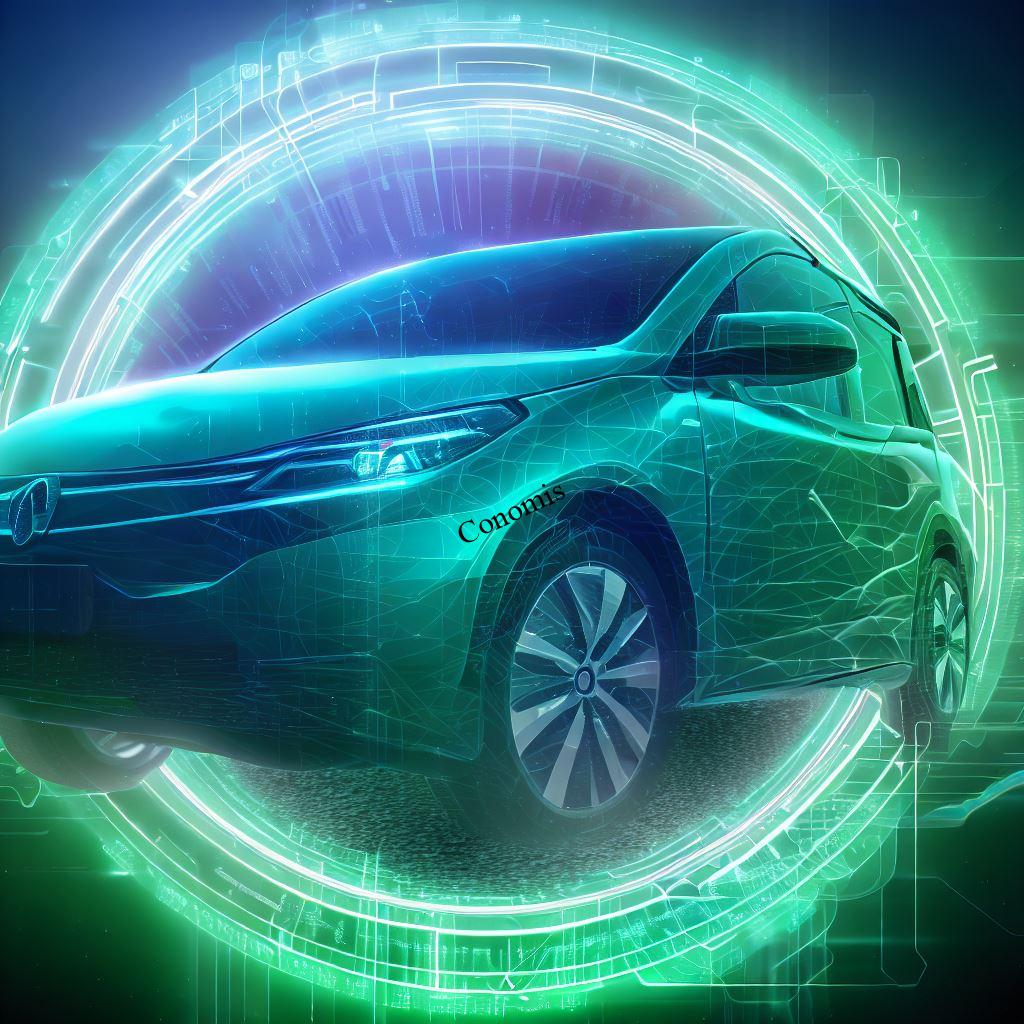
Moreover, the operational mechanism of EVs offers a unique driving experience. The immediate torque provided by electric motors ensures smooth and rapid acceleration. Additionally, their simpler design translates to fewer moving parts, potentially resulting in reduced maintenance over time.
In essence, Electric Vehicles (EVs) are not just another type of car on the road; they symbolize a paradigm shift in how we perceive and experience transportation.
Types of EVs
As the era of electric transportation unfolds, our roads are witnessing an influx of diverse electric vehicle (EV) designs. This diversity is not merely cosmetic; it stems from distinct technological approaches tailored to varying needs and preferences.
Among the most prominent types are Battery Electric Vehicles (BEVs). These are the purest form of electric vehicles, relying entirely on electricity stored in their batteries for propulsion. They lack a traditional gasoline engine altogether. When a BEV’s battery runs low, it needs to be recharged, often via a home charging system or a public charging station. With zero tailpipe emissions, BEVs represent a vision of purely electric transport, eliminating dependency on fossil fuels.

Next, we have Plug-in Hybrid Electric Vehicles (PHEVs). These vehicles come equipped with both an electric battery and a conventional gasoline engine. They can operate purely on electric power for short distances and then switch to the gasoline engine when the battery is depleted. The beauty of PHEVs lies in their flexibility, allowing drivers to enjoy the benefits of electric driving while having the backup of gasoline propulsion for longer journeys.
Lastly, Hybrid Electric Vehicles (HEVs) serve as a bridge between traditional cars and the new generation of EVs. While they have both a gasoline engine and an electric motor, they cannot be plugged in and charged. Instead, they generate electricity through regenerative braking and the gasoline engine, using the electric motor primarily for low-speed driving.
In conclusion, the landscape of EVs is rich and varied, catering to diverse driving needs while collectively steering us towards a more sustainable future.
The Green Impact of EVs
Carbon Emissions Reduced by EVs
Amidst the ever-growing concerns about global warming and environmental degradation, Electric Vehicles (EVs) have emerged as a beacon of hope. Their introduction into the transportation sector signifies a pivotal step in addressing the profound challenge of carbon emissions, which has been a driving force behind many of the world’s current environmental crises.
The most striking feature of Electric Vehicles (EVs) is their impeccable eco-friendly nature. Unlike their gasoline counterparts, when EVs are in operation, they do not release harmful pollutants from their tailpipes. Traditional gasoline engines combust fuel, releasing not just carbon dioxide but also a slew of other noxious emissions such as nitrogen oxides and particulate matter. These pollutants have adverse effects on our health, ecosystems, and the atmosphere.
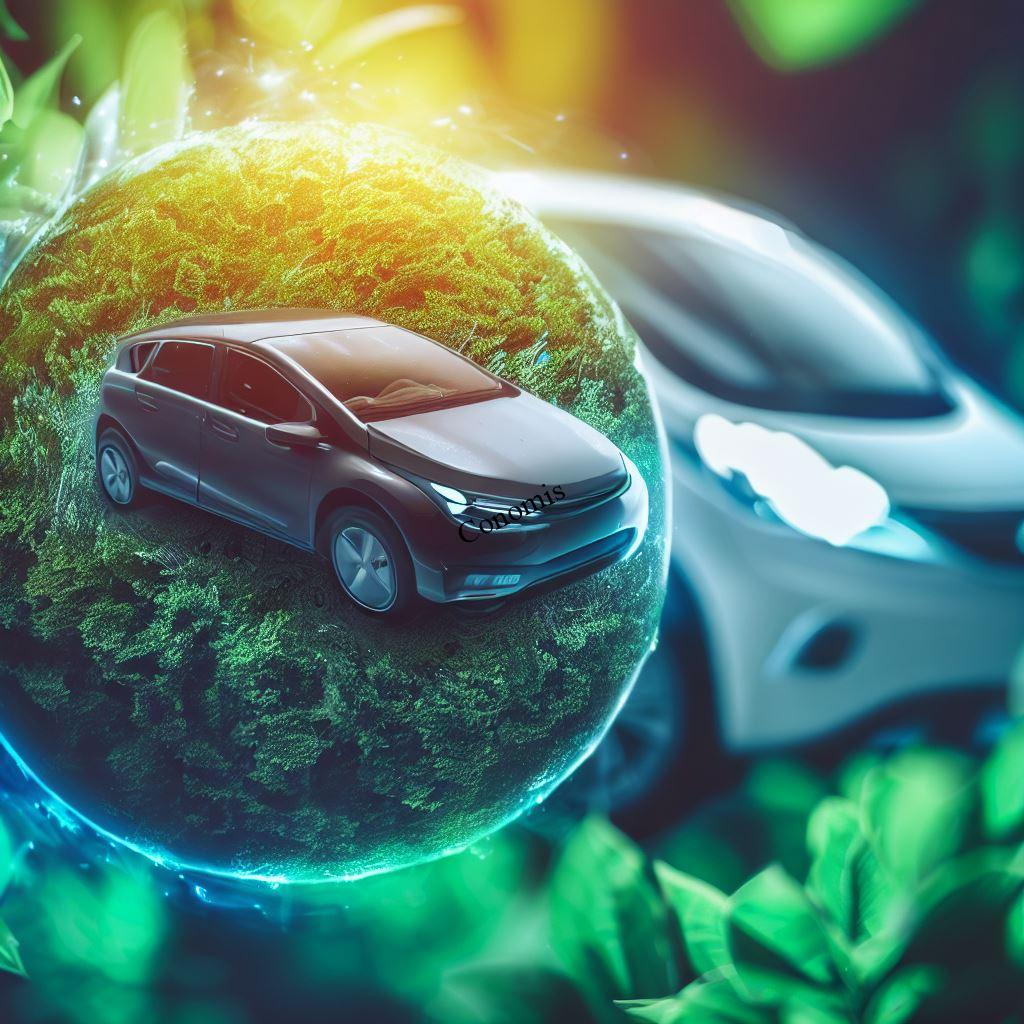
On the other hand, EVs, powered by electricity, have a cleaner operational mechanism. The energy driving these vehicles is derived from batteries, completely eliminating the need for combustion and, consequently, emissions at the vehicle level. This translates to fresher air in urban areas, a reduction in greenhouse gases, and a significant step towards mitigating the consequences of climate change.
It’s essential, however, to note that the true environmental footprint of EVs depends on the source of their electricity. If powered by renewable sources like wind or solar, their impact is even more commendable. Nevertheless, even when charged from conventional grids, the centralized emissions from power plants are typically lower and more controlled than millions of tailpipes on the roads.
In essence, the proliferation of Electric Vehicles (EVs) signals a promising shift in our fight against environmental degradation, with their ability to significantly curtail carbon emissions at the forefront.
EVs and Renewable Energy Sources
Electric Vehicles (EVs) stand as a testament to mankind’s ingenuity in addressing environmental concerns. But their potential to revolutionize green transportation doesn’t end merely at the tailpipe. When combined with renewable energy sources, EVs can truly redefine the parameters of sustainable transportation.
Imagine an EV, already impressive in its low emissions, being powered by the infinite and clean energy of the sun or the wind. The integration of renewable energy sources for charging EVs significantly amplifies their environmental benefits. This synergy ensures that not only are the vehicles running without direct emissions, but the very energy they utilize is derived from sustainable, non-polluting sources.
Solar energy, for instance, harnesses the abundant energy of the sun. When used to power EV charging stations, it offers a two-fold solution – promoting clean transportation and reducing dependence on fossil fuels. Similarly, wind energy, captured using turbines and converted into electricity, presents another viable and eco-friendly option for charging EVs.
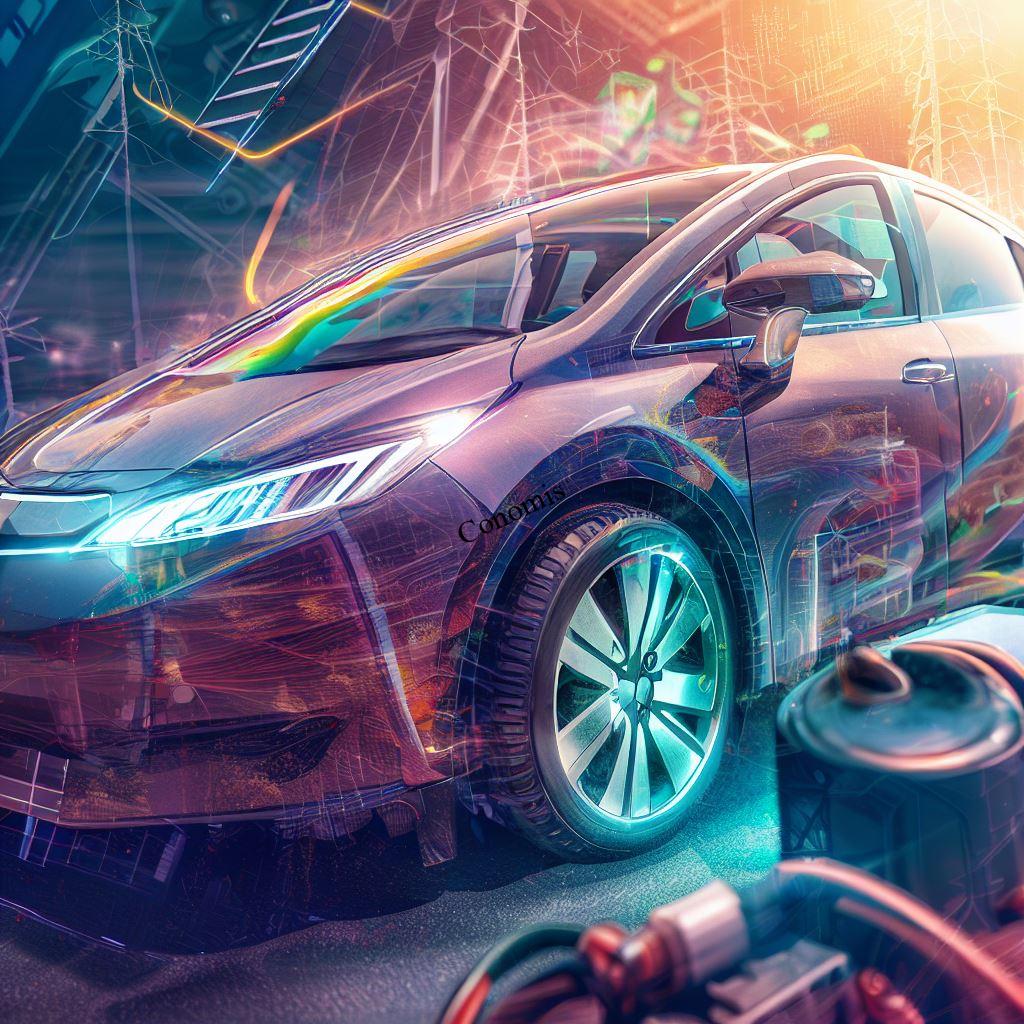
The union of EVs and renewable energy sources creates a holistic green system, a seamless loop of clean energy production and consumption. By minimizing the carbon footprint at both the generation and usage stages, we can ensure a substantially reduced impact on the environment.
In conclusion, while EVs on their own are a formidable solution to environmental challenges, their combination with renewable energy sources like solar and wind elevates them to a whole new level of sustainability. This integration not only represents the pinnacle of green transportation but also charts a path for a future where our mobility doesn’t compromise the planet’s well-being.
Why EVs Shine Brightly
Cost Savings with EVs
While Electric Vehicles (EVs) often capture headlines for their environmental benefits, their financial advantages, especially in the long run, are equally compelling. Owners of EVs are discovering that, over time, their investment can lead to substantial cost savings, particularly when compared to the recurring expenses associated with traditional gasoline-powered vehicles.
At first glance, the initial purchase price of an EV might appear higher than that of a conventional vehicle. However, it’s crucial to view this investment in a broader context. Over its lifespan, an EV often compensates for, if not surpasses, its initial costs, primarily due to savings from charging.
Charging an EV, in most regions, is significantly cheaper than the consistent refueling of gasoline. Electricity prices, especially when sourced during off-peak hours or from renewable sources, can be much lower than volatile gasoline prices, which are susceptible to global market fluctuations and geopolitical events. Over years of ownership, these savings accumulate, often amounting to thousands of dollars.
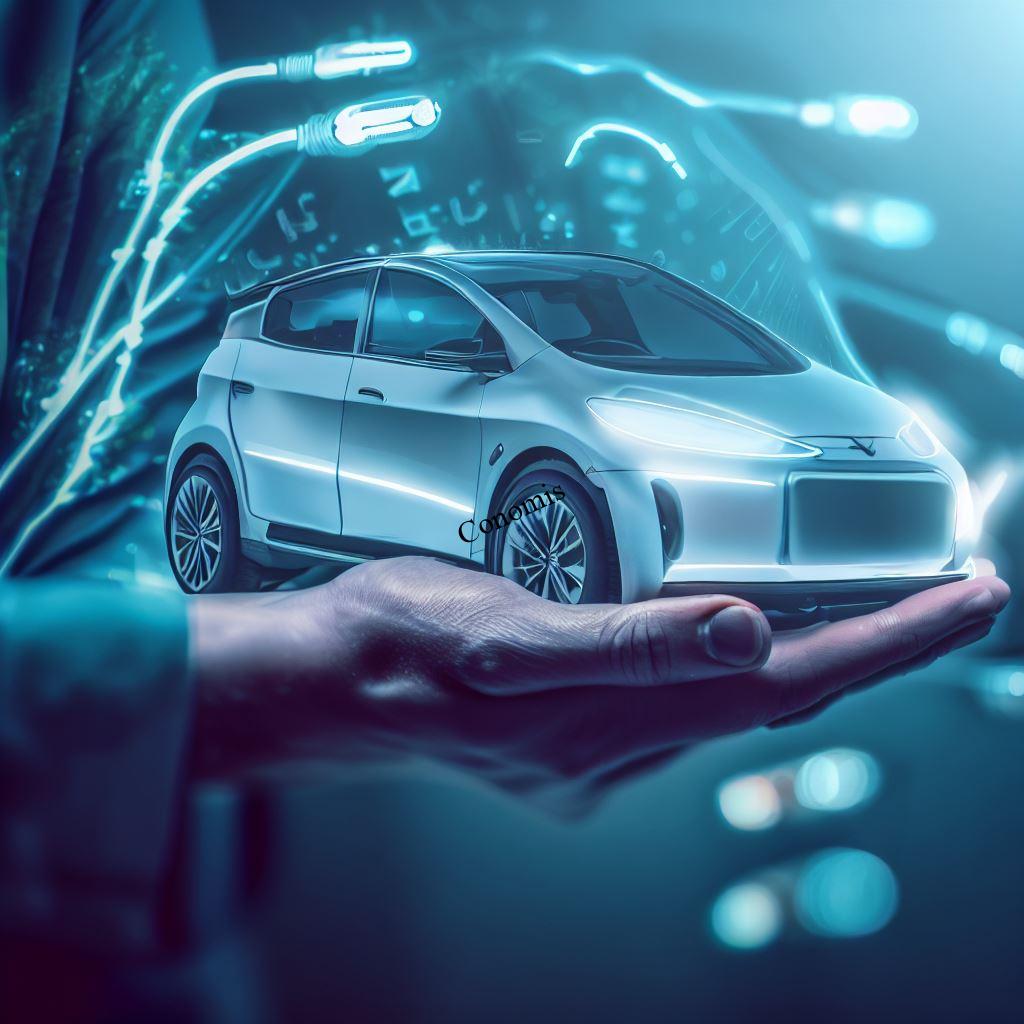
Moreover, EVs are mechanically simpler with fewer moving parts than their gasoline counterparts. This simplicity often results in lower maintenance costs. Absence of typical gasoline engine components, like exhaust systems, radiators, and transmissions, means fewer components to repair or replace.
Tax incentives and rebates provided by governments, recognizing the environmental benefits of EVs, further sweeten the deal for potential EV owners. These financial incentives, designed to encourage EV adoption, can substantially reduce the effective cost of the vehicle.
In sum, while the upfront costs of Electric Vehicles (EVs) might seem daunting, a comprehensive perspective that factors in long-term savings, from charging and maintenance to tax benefits, presents a compelling financial argument in favor of EVs over traditional vehicles.
Environmental Harmony of EVs
The rise of Electric Vehicles (EVs) heralds more than just a shift in transportation technology; it signifies a broader commitment to reconciling human progress with environmental responsibility. EVs are not only champions of reduced greenhouse gas emissions but also bearers of a quieter, more harmonious urban environment.
A primary environmental boon of EVs lies in their zero-emission nature. Traditional gasoline-powered vehicles emit a myriad of pollutants, including carbon dioxide, hydrocarbons, and nitrogen oxides, which contribute to smog, acid rain, and global warming. In stark contrast, EVs, when in operation, release no tailpipe pollutants. Their clean energy footprint means cleaner air, fewer greenhouse gases, and a significant stride toward combatting the escalating climate crisis.
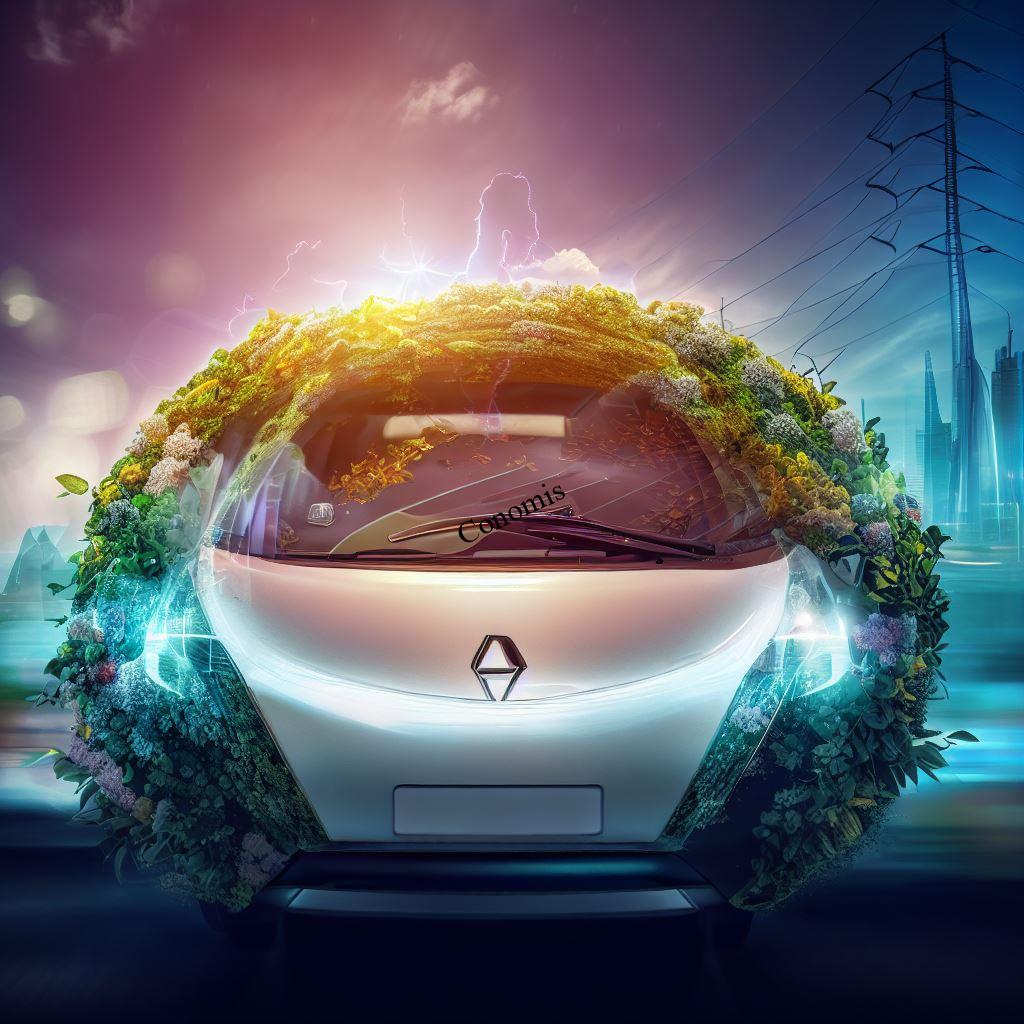
However, the environmental merits of EVs extend beyond just air quality. Another often overlooked advantage is their contribution to reducing noise pollution. Traditional vehicles, with their combustion engines and exhaust systems, generate a considerable amount of noise, especially at higher speeds or during acceleration. EVs, being powered by silent electric motors, substantially reduce this noise. The resultant quieter streets promise not just a more peaceful ambiance but also have tangible health benefits, reducing stress and sleep disturbances associated with noise pollution.
Cities of the future, with EVs as dominant vehicles, envision not just cleaner air but also serene soundscapes. Roads devoid of the constant roar of engines and the smell of exhaust fumes will redefine urban living.
In essence, Electric Vehicles (EVs) are not just machines of mobility; they’re harbingers of an era where technological advancements and environmental harmony coexist, ensuring a sustainable and pleasant living environment for all.
The Superior Driving Experience
Steering into the future of transportation, Electric Vehicles (EVs) aren’t just about environmental conservation or cost efficiency; they present an entirely new, exhilarating experience behind the wheel. Many drivers, after their first encounter with an EV, often rave about the distinct pleasure that these vehicles bring to the road.
A defining trait of EVs is their acceleration. Traditional gasoline engines require a complex dance of moving parts, air, and fuel mixtures to generate power, resulting in a progressive build-up of speed. EVs, on the other hand, deliver power directly from the battery to the electric motor, which then translates to the wheels. This immediate power transfer means that EVs benefit from instant torque. So, when an EV driver steps on the accelerator, the vehicle responds immediately, launching forward without the lag commonly associated with conventional vehicles.
This smooth and rapid acceleration isn’t just about thrill; it also contributes to safety. When quick overtakes or emergency maneuvers are needed, an EV’s responsive nature can be a significant asset, allowing drivers to react promptly to changing road conditions.
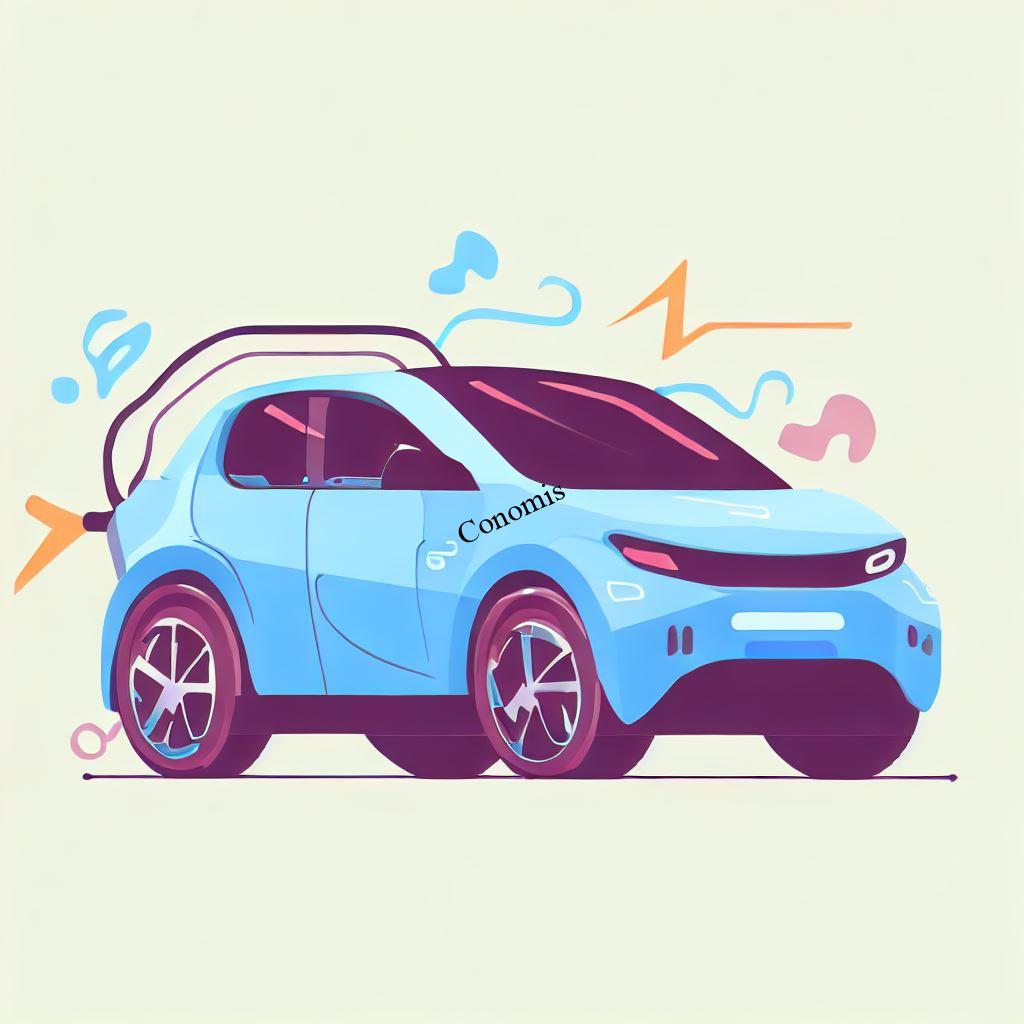
Additionally, the absence of a traditional combustion engine means there’s no engine vibration or gear shifts. This results in a remarkably smooth ride, devoid of the jolts and jerks that can sometimes characterize gasoline vehicles. Cruising in an EV feels serene, with only the soft hum of the electric motor and the road beneath you.
In conclusion, while the environmental and economic benefits of Electric Vehicles (EVs) are often highlighted, their superior driving experience stands as an equally compelling reason for their rising popularity. For many, once they’ve experienced the smooth and instant power of an EV, there’s simply no going back.
AI Enhancements in EVs
Boosting Battery Efficiency
In the world of transportation, the battery stands as the heart of Electric Vehicles (EVs). As EV adoption accelerates globally, there’s a heightened focus on enhancing battery efficiency, ensuring drivers get more mileage out of each charge. Today, innovations in AI (Artificial Intelligence) are supercharging this effort, revolutionizing how modern EVs manage and optimize their battery performance.
One of the primary concerns of potential EV owners is “range anxiety” — the fear that the vehicle will run out of charge before reaching a charging station. Addressing this concern, automakers have turned to AI, using its prowess to glean insights from vast amounts of data to improve battery management systems. By analyzing factors such as driving habits, ambient temperature, and battery health, AI algorithms can make real-time adjustments to maximize efficiency.
Moreover, predictive maintenance powered by AI ensures that battery health is consistently monitored. Anomalies, wear, and potential faults can be detected long before they become critical issues, ensuring that the battery maintains its optimal performance over its lifetime. This not only extends the battery’s life but also safeguards the consistent range of the vehicle.

Furthermore, AI-driven optimization tools can guide drivers on efficient driving habits and suggest optimal routes that conserve energy, combining shorter distances with terrains that are less demanding on the battery.
In essence, the synergy between Electric Vehicles (EVs) and Artificial Intelligence represents a significant leap forward in the evolution of green transportation. By harnessing the capabilities of AI, modern EVs ensure that drivers can embark on longer journeys with confidence, all while maximizing the potential of their batteries. The future of EVs, bolstered by AI, promises not only sustainability but also enhanced reliability and efficiency.
Predictive Maintenance
In the rapidly evolving landscape of automotive technology, AI stands out as a game-changer, especially in the realm of Electric Vehicles (EVs). One of its most transformative applications lies in predictive maintenance, an intelligent approach that promises to make unexpected vehicle breakdowns a thing of the past.
At its core, predictive maintenance revolves around anticipating and addressing issues before they escalate into major problems. Unlike traditional maintenance that operates on set schedules or waits for a fault to manifest, AI-driven predictive systems continuously monitor a vast array of vehicle parameters in real-time. By analyzing data points from sensors throughout the vehicle, from battery health to motor performance, AI can identify subtle anomalies or patterns that may indicate an impending issue.
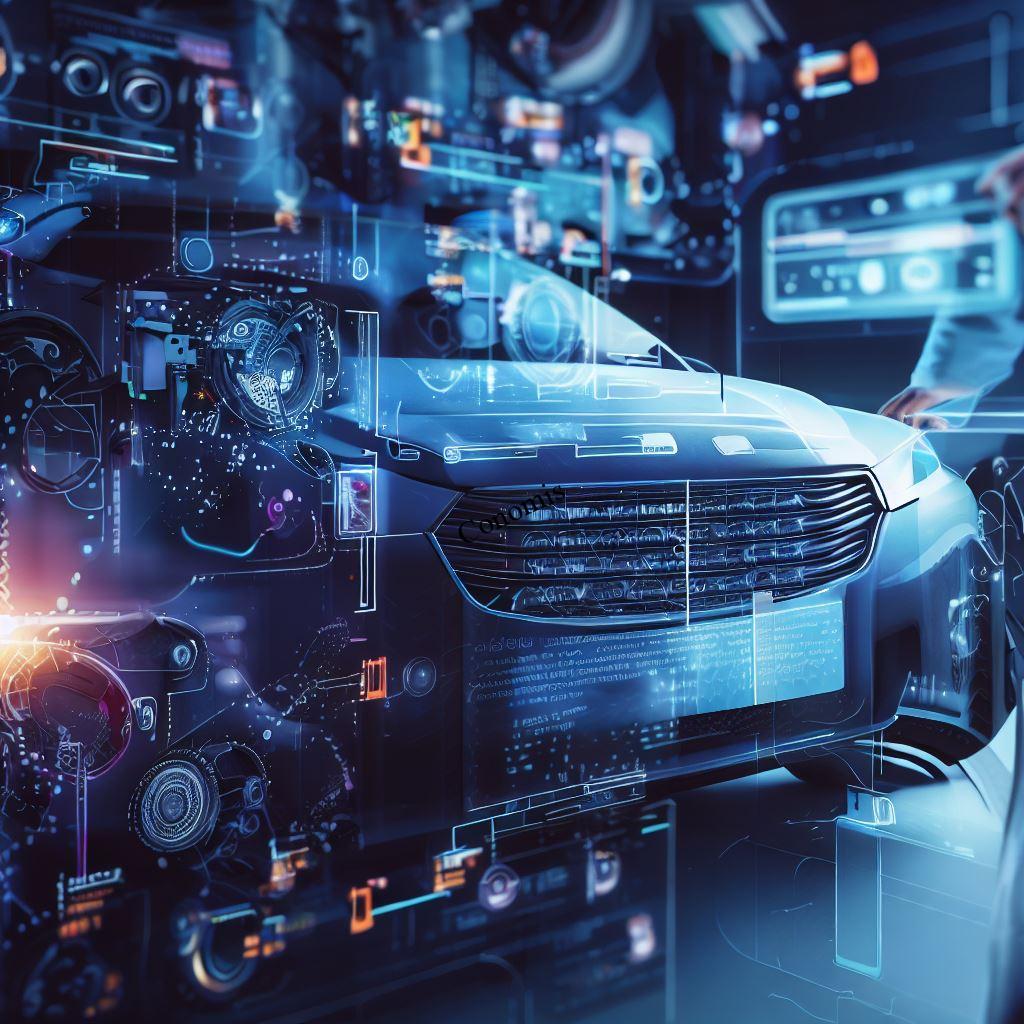
This early detection empowers owners and technicians with the foresight to address minor issues, preventing them from snowballing into substantial malfunctions that could lead to unexpected breakdowns. As a result, vehicle downtime is minimized, ensuring that EVs spend more time on the road and less in the repair shop.
Furthermore, this proactive approach to maintenance can extend the lifespan of vehicle components, offering long-term cost savings to owners. It’s a win-win: drivers experience enhanced reliability and peace of mind, while the vehicles themselves benefit from optimized performance and longevity.
In conclusion, with AI at the helm, the future of EV maintenance looks not just reactive but proactively intelligent, ensuring that EVs remain at the pinnacle of automotive reliability.
Machine Learning: Advanced Techniques for EV Enhancement
Electric Vehicles (EVs) are not just a testament to technological advancements in transportation but also an embodiment of the profound impact of data science. Central to this data-driven evolution is machine learning, a subset of AI that’s drastically reshaping how EVs operate, learn, and improve over time.
Machine learning revolves around enabling machines to learn from data and make informed decisions without explicit programming. When applied to EVs, this translates to a vehicle that continuously learns from its environment, driver behavior, and its own internal systems. By processing vast volumes of data from onboard sensors, cameras, and user interactions, machine learning algorithms can discern patterns, behaviors, and anomalies.
This analytical prowess has multifaceted implications. For instance, machine learning can optimize battery usage based on driving habits, ensuring that energy is utilized in the most efficient manner possible. Similarly, by studying the data from various drives, the system can suggest optimal routes, parking spots, or even charging stations based on historical data and current conditions.
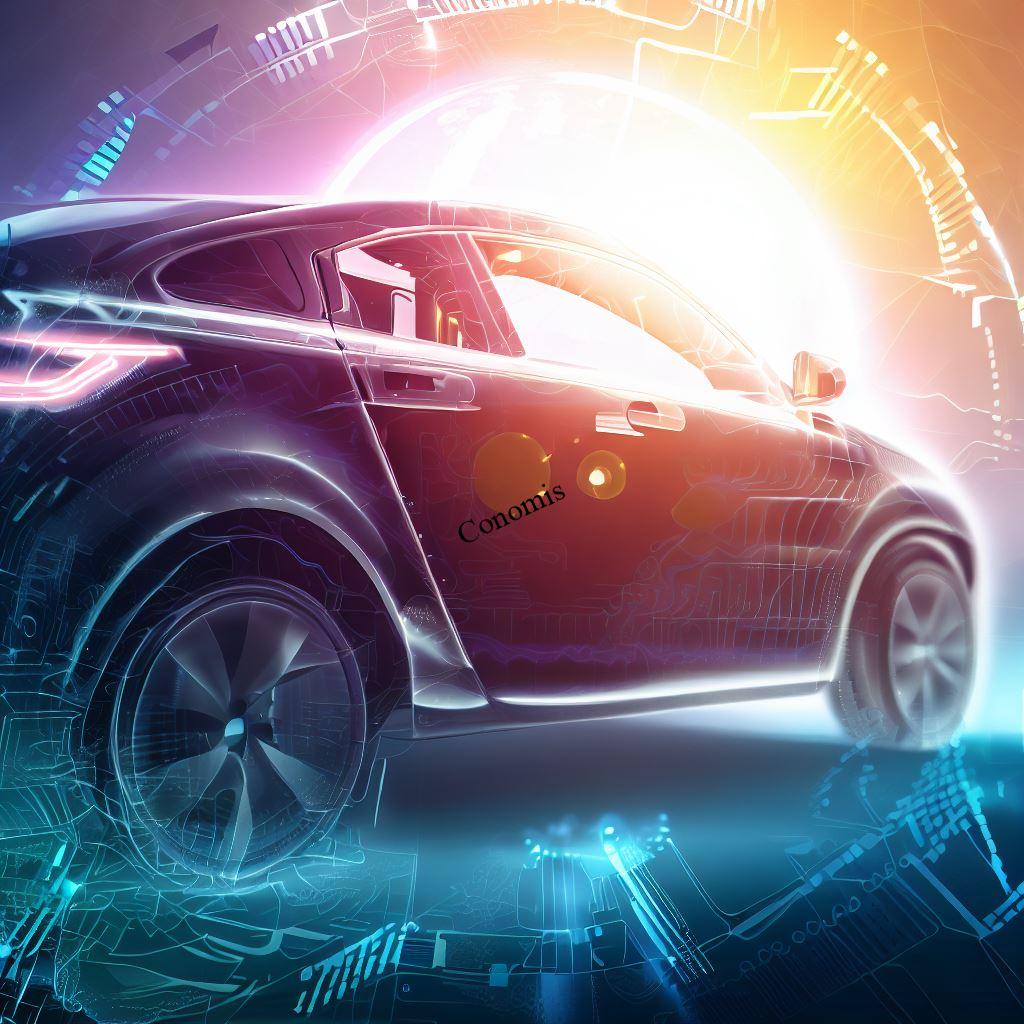
Furthermore, these advanced techniques contribute significantly to the enhancement of safety features. By learning from past driving scenarios and analyzing real-time data, EVs can anticipate potential hazards, assist in navigation, or even automate certain driving tasks to enhance safety.
In summation, machine learning is not merely an add-on to the modern EV; it’s integral to its evolution. With every journey, every turn, and every stop, the vehicle learns, adapts, and improves, ensuring a driving experience that’s not just efficient but also perpetually refined.
Advanced Safety Features: AI-backed Security on the Move
The world of transportation is witnessing a revolutionary shift, not only in how vehicles move but also in how they protect their passengers. A vanguard in this transition is the integration of AI in Electric Vehicles (EVs), enhancing safety to levels previously thought unattainable.
AI-backed safety mechanisms are fundamentally changing the driving experience. By employing sensors, cameras, and radars placed strategically around the vehicle, an AI system continuously monitors the surroundings in real-time. This vast inflow of data is then processed at lightning speeds, allowing the vehicle to make split-second decisions that can prevent accidents and ensure the safety of the passengers.
For instance, features such as automatic emergency braking can detect potential collision threats and apply the brakes if the driver fails to respond in time. Similarly, lane departure warnings and lane-keep assist systems use AI to determine if the vehicle is unintentionally drifting out of its lane, providing corrective actions or alerts as necessary.

Moreover, AI-driven adaptive cruise control can adjust the vehicle’s speed based on the traffic flow, maintaining safe distances from other vehicles. In more advanced systems, AI can even anticipate and navigate around obstructions, pedestrians, or any other potential hazards, providing an added layer of protection.
In essence, these AI-backed mechanisms represent the future of vehicular safety. By seamlessly merging technology with transportation, Electric Vehicles (EVs) promise not just eco-friendly travel but also journeys that prioritize the well-being and safety of everyone on board.
Conclusion
The transportation landscape is undeniably shifting, with Electric Vehicles (EVs) taking center stage in this transformative journey. As we reflect on their increasing prevalence, it’s evident that EVs are not just an alternative mode of transport; they’re paving the way for the future.
The environmental implications of EVs are profound. By operating without the harmful emissions associated with traditional combustion engines, Electric Vehicles (EVs) promise cleaner air and a significant reduction in the carbon footprint. Urban centers, often plagued with smog and air pollution, stand to benefit immensely as more EVs hit the roads, representing a stride towards a healthier planet.
From an economic perspective, EVs are a beacon of long-term savings. The cost dynamics of charging an EV, when compared to the recurring fuel costs of gasoline-powered vehicles, highlight a more economical approach to transportation. Over time, these savings can be substantial, making the EV transition not just environmentally sensible but also financially prudent.

Lastly, the marriage of AI and EVs is revolutionizing the driving experience. With machine learning algorithms optimizing battery performance, predictive maintenance reducing unexpected breakdowns, and advanced safety features ensuring enhanced protection, AI in Electric Vehicles (EVs) showcases the pinnacle of automotive innovation.
In summation, Electric Vehicles (EVs) are not merely vehicles; they’re a testament to human ingenuity and a commitment to a better, more sustainable tomorrow. They symbolize a future where transportation isn’t just about getting from one place to another, but about doing so responsibly, efficiently, and innovatively.
FAQs
How do EVs combat pollution?
EVs, especially Electric Vehicles (EVs), have no tailpipe emissions.
Are EVs more cost-effective over time?
Yes, they provide savings on fuel and maintenance.
How does AI boost EV performance?
AI in EVs enhances battery efficiency, safety, and anticipates maintenance needs.
Do EVs offer a smoother ride?
Absolutely, they’re known for smoother and quieter drives.
Are EVs set to dominate future transportation?
With their numerous benefits, they are poised to be a major player in the transportation sector.
You Can Also Read

https://en.wikipedia.org/wiki/Electric_vehicle
https://www.mbusa.com/en/eq-electric-cars
Conomis Thoughts
![]() Copyright 2023 CONOMIS
Copyright 2023 CONOMIS

Way cool, some valid points! I appreciate you making this article available, the rest of the site is also high quality. Have a fun.
I¦ll right away take hold of your rss feed as I can’t in finding your email subscription link or e-newsletter service. Do you have any? Kindly allow me recognize in order that I may just subscribe. Thanks.
Great website! I am loving it!! Will come back again. I am bookmarking your feeds also.
I must show some appreciation to the writer for bailing me out of this type of condition. As a result of surfing around through the online world and getting tips that were not beneficial, I believed my entire life was done. Existing without the presence of approaches to the difficulties you have resolved by way of this write-up is a crucial case, and the kind which might have badly affected my entire career if I had not discovered your web site. Your personal expertise and kindness in touching the whole lot was tremendous. I’m not sure what I would have done if I hadn’t discovered such a point like this. It’s possible to at this moment look ahead to my future. Thanks a lot very much for this impressive and result oriented guide. I won’t be reluctant to propose your web site to anybody who desires support on this issue.
I’ve recently started a blog, the information you offer on this web site has helped me tremendously. Thanks for all of your time & work.
I like this post, enjoyed this one appreciate it for putting up. “The reward for conformity was that everyone liked you except yourself.” by Rita Mae Brown.
You are my inspiration , I own few blogs and rarely run out from to post .
Thanks a lot for sharing this with all of us you really know what you are talking about! Bookmarked. Kindly also visit my site =). We could have a link exchange agreement between us!
Thank you for the good writeup. It if truth be told was a entertainment account it. Glance complicated to more introduced agreeable from you! By the way, how could we communicate?
Can I just say what a relief to find someone who actually knows what theyre talking about on the internet. You definitely know how to bring an issue to light and make it important. More people need to read this and understand this side of the story. I cant believe youre not more popular because you definitely have the gift.
My brother suggested I might like this web site. He was entirely right. This post truly made my day. You cann’t imagine simply how much time I had spent for this information! Thanks!
Perfectly written content material, regards for selective information. “The bravest thing you can do when you are not brave is to profess courage and act accordingly.” by Corra Harris.
Hi! Quick question that’s entirely off topic. Do you know how to make your site mobile friendly? My weblog looks weird when browsing from my apple iphone. I’m trying to find a theme or plugin that might be able to correct this problem. If you have any recommendations, please share. Many thanks!
I genuinely enjoy studying on this website , it has wonderful articles.
you have an incredible blog here! would you like to make some invite posts on my weblog?
I am usually to running a blog and i actually respect your content. The article has actually peaks my interest. I am going to bookmark your site and preserve checking for brand new information.
Hi, I think your site might be having browser compatibility issues. When I look at your website in Safari, it looks fine but when opening in Internet Explorer, it has some overlapping. I just wanted to give you a quick heads up! Other then that, fantastic blog!